Air Plant: Grand Discussion or Small Inspiration
Wen-Yao CHEN
1.
When speaking about the Air Plant: Performance Ability within Contemporary Arts exhibition (hereafter referred to as the Air Plant exhibition), Chun-Yi Chang has always said “I am an artist before I am a curator.” She adopts a creative mindset to plan the Air Plant exhibition, and attempts to give the audience an acre of rich practical art. Naturally, the most suitable way of presenting this exhibition is for it to feature artworks that are based on the individuals who realized them; that is, the artists who participated in this exhibition. This is what makes this exhibition different from most other exhibitions, where discussions are only possible after the opening of the exhibitions and after different artworks have been created. Because the Air Plant exhibition is the result of many people’s hard work, interaction and mutual inspirations between participating artists began from the very beginning of the exhibition; from exhibition site selection to sharing drafts of their artwork plans on the Air Plant Sharing Platform, artists witnessed the growth of the exhibition while contemplating about their own art creations.
Chang tells the artists “I want you to make what you want to make the most right now” and invites them to throw out ideas. It does not matter if these ideas are unclear or random. We often think that the reason we interact so often is to understand each other. In reality, the deeper meaning of interaction is for us to understand each other’s differences. By walking into other people’s creative thinking and using others to stimulate ourselves, we can discover our own blind spots and break through subconscious limitations that we have drawn for ourselves. Under this type of exhibition planning, the Air Plant exhibition no longer serves only as an “attachment” to the artworks; instead, it is also closely linked to the artwork creation process. The exhibition is proactive and plays a constructive role: its construct requires artists to resort to direct practice. Artistic performance is used to bridge the gap between making the artworks and the exhibition. Returning to the art creations, the Air Plant exhibition acts as a medium that connects the audience to the artworks. The exhibition makes the artist demonstrate their skills on site. Because each artwork can be an “air plant” and has its own growth and environmental adaptation method, the works echo the concept of the exhibition; that is, finding their own form.
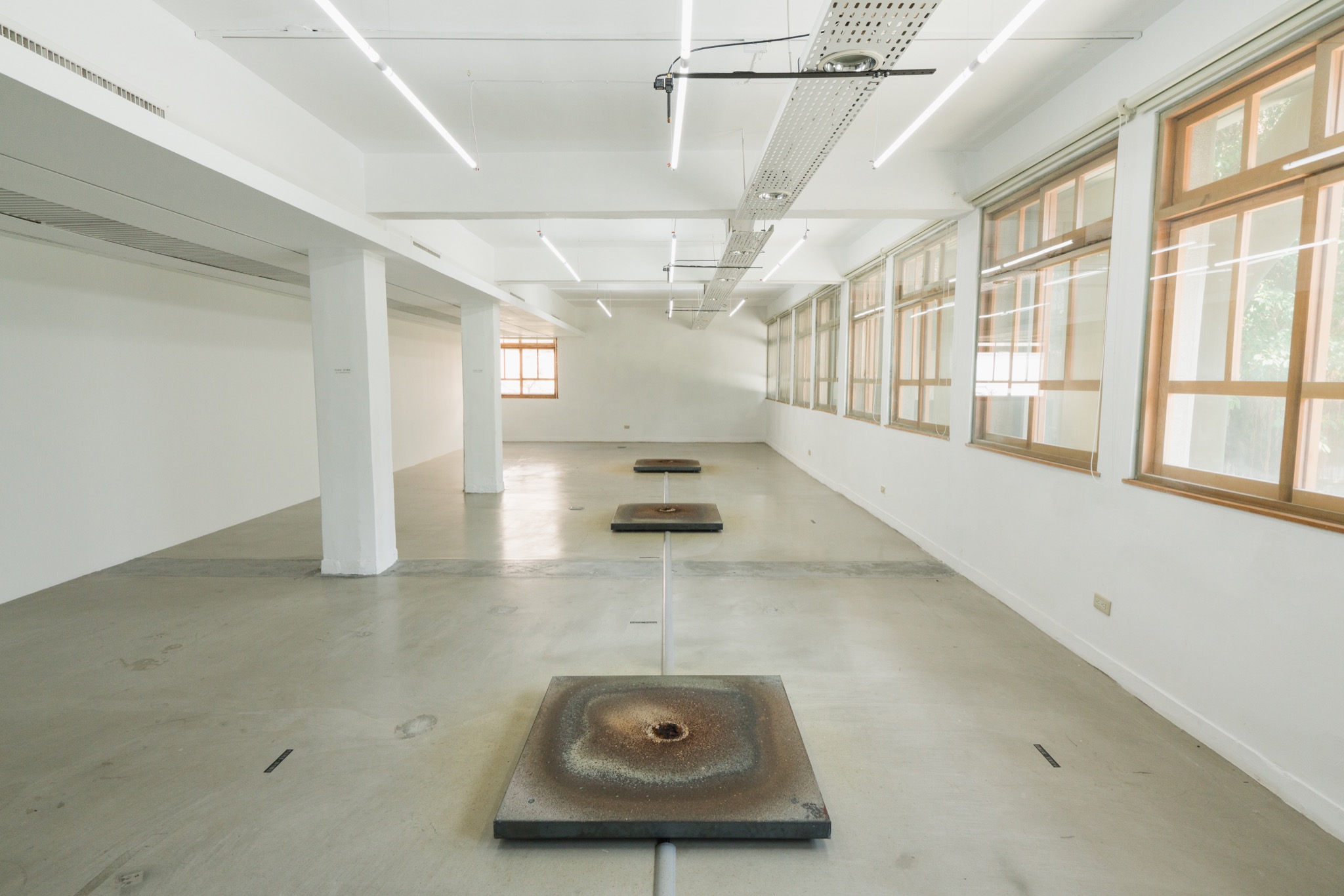
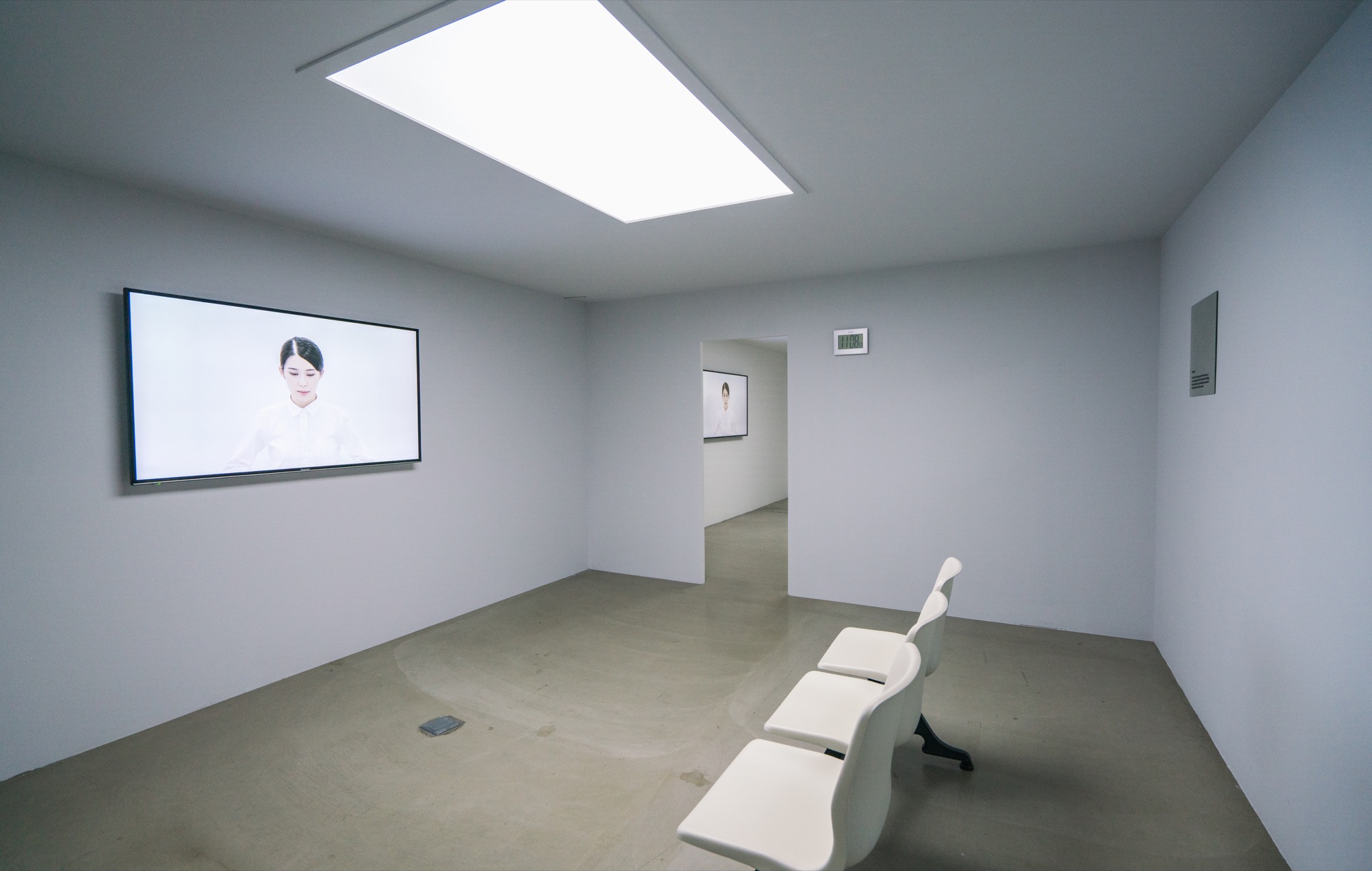
2.
Let us take a look at a few example of how artworks converse with the exhibition sites.
Participating in an exhibition requires visitors to enter a specific space. The most direct example of this is the note “dimensions variable” found on artwork description plaques that visitors often see (in the Air Plant exhibition, 10 of the 16 artworks has this note); an indirect example of this is the connections between different artworks. For example, Yung-Ta Chang uses copper sulfate aqueous solution of varying concentrations to corrode heated metal plates at a fixed dripping speed in his Relative Perception N°4-C. (Picture 1) After a period of time has elapsed, the colors of the surfaces of the three metal plates change and different crystals form. The artist uses “time” to create physical imprinting, blowing the audience’s mind. In Joyce Ho’s These Things That Drift Away, three almost identical rooms are set up. With three digital clocks approximately five minutes apart, three videos one second apart, three white chairs of varying whiteness, and three phones with varying dial tones, light music is played and a woman (Vera Sung) on screen repeats her movements. Time in this context is transformed into body memory and involuntary inertia. (Picture 2)
Artworks can be modified according to different exhibition environments. In 254 Yen, Joyce Ho and Snow Huang epitomize the notion of “dimensions variable” as a result of multiple coincidences. (Picture 3)
When Joyce Ho and Snow Huang first surveyed the site, they noticed some clothes, a blanket, an air mattress, and other daily supplies that were left behind at the site. Inside a black plastic bag, 254 Japanese yen and some ID photos were found. These items printed a clear picture of the temporary resident’s daily life. Ho and Huang speculated that the temporary resident resided at the site between January 2017 (after the end of the Greater Taipei Biennial of Contemporary Arts) and June 2017 (when they surveyed the site). Initially, they planned on making a fictional character out of the items left at the site, and simulating a temporary occupant. But during their search for this socially marginalized temporary occupant (who went by the pseudonym Guo-Fang Qu), they found another “invader” who might be earliest resident to live in the empty building (who went by the pseudonym Yong-Zhou Li).
From site survey to its completion, 254 Yen hang on to this accidental site discovery. However, the artists’ efforts were not to find the truth or restore the scene, but to turn Guo-Fang Qu’s temporary living space into a museum called “Guo-Fang Qu’s Home.” The original items were placed in a lost and found area (that is only accessible to the owner; however, many visitors have tried to turn the door handle), and items used by Guo-Fang Qu were placed in a showroom (the items are of course replicas that have been selected; text written in pencil looks like descriptions from afar, but close examination shows it to be the observations and thoughts of the artists about various items). There is an interview with a related person (Yong-Zhou Li; intentionally expressed using “replay”) and a small room that can only be viewed through a small opening; the room has been decorated to replicate Guo-Fang Qu living there (with dramatic effect). The site of a true story was turned into an artwork, in which the place where Guo-Fang Qu once lived became an irreplaceable inspiration.
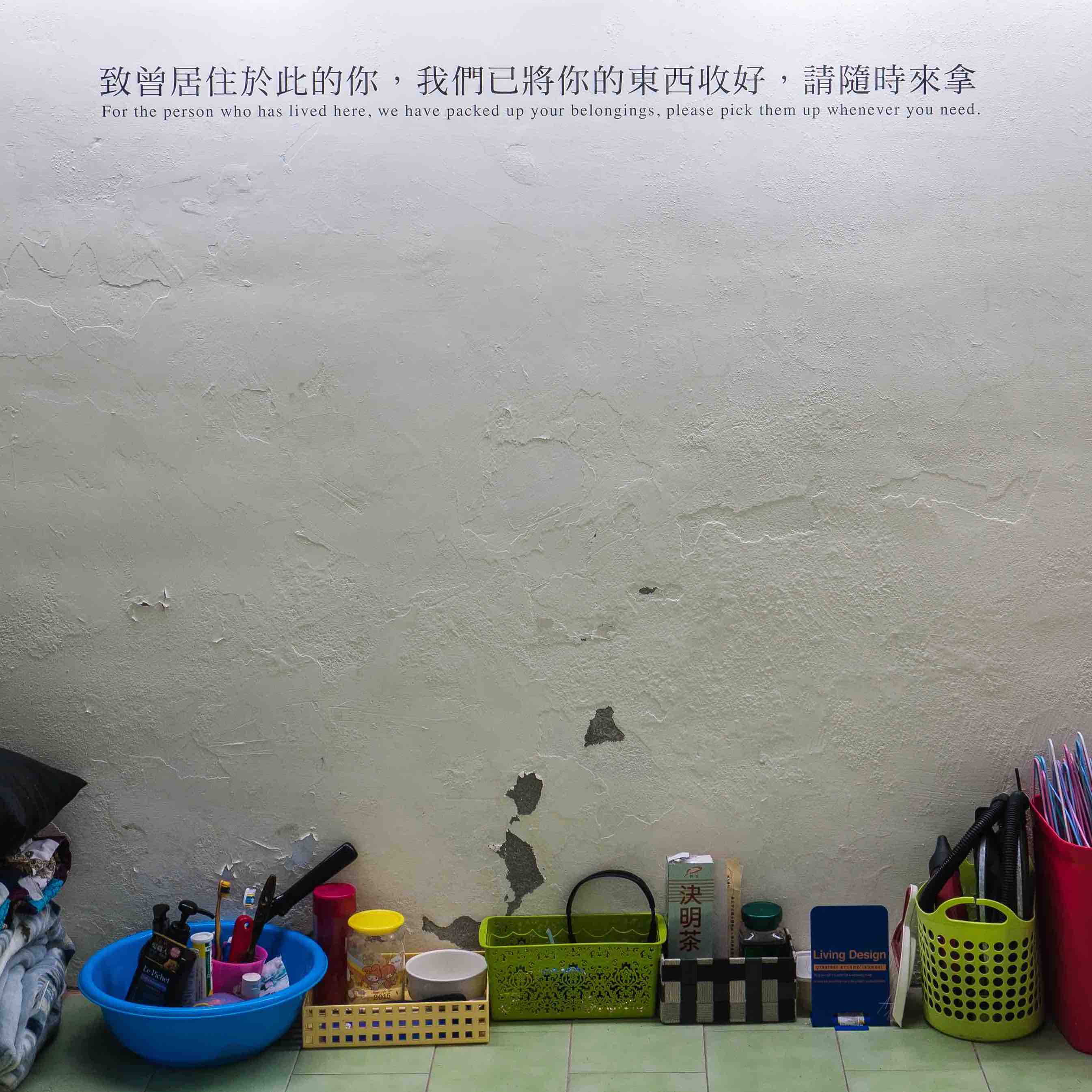
3.
“When we think that we are talking about art or an artwork, often times we are merely talking about the impression that we formed at an exhibition. Although art aficionados may deny this statement, they never discuss an artwork on its own merit; instead, they describe the circumstances under which they encountered this artwork.”
In his book, Art: A History of Exhibitions (L’art: une histoire d’expositions), French scholar Jérôme Glicenstein discusses how exhibitions influence the audience’s interpretation of artworks. The process of influence is divided into multiple steps, the first of which is curator’s position. Glicenstein believes that fictional forms exist in exhibitions because exhibitions are venues where people use artworks to convey specific perspectives, positions, or postures. Curatorial discussions link the creative concepts of multiple artworks, which are eventually rendered to the audience in the exhibitions. This can be seen as a type of collage, or a “meta-work” (méta-œuvre). The second step is the exhibition’s language and arrangement. The site that an exhibition provides is never neutral. Internally, an exhibition has to consider organization and coordination of various artworks. Externally, an exhibition must consider the experience offered to the audience in advance. When the artworks are displayed, they will unavoidably go through certain displacement (whether literally or figuratively). Thus, the physical artworks are no longer the only sources for visitors to perceive their meanings, and visitors’ interpretations of artworks cannot be entirely free from the site’s influence.
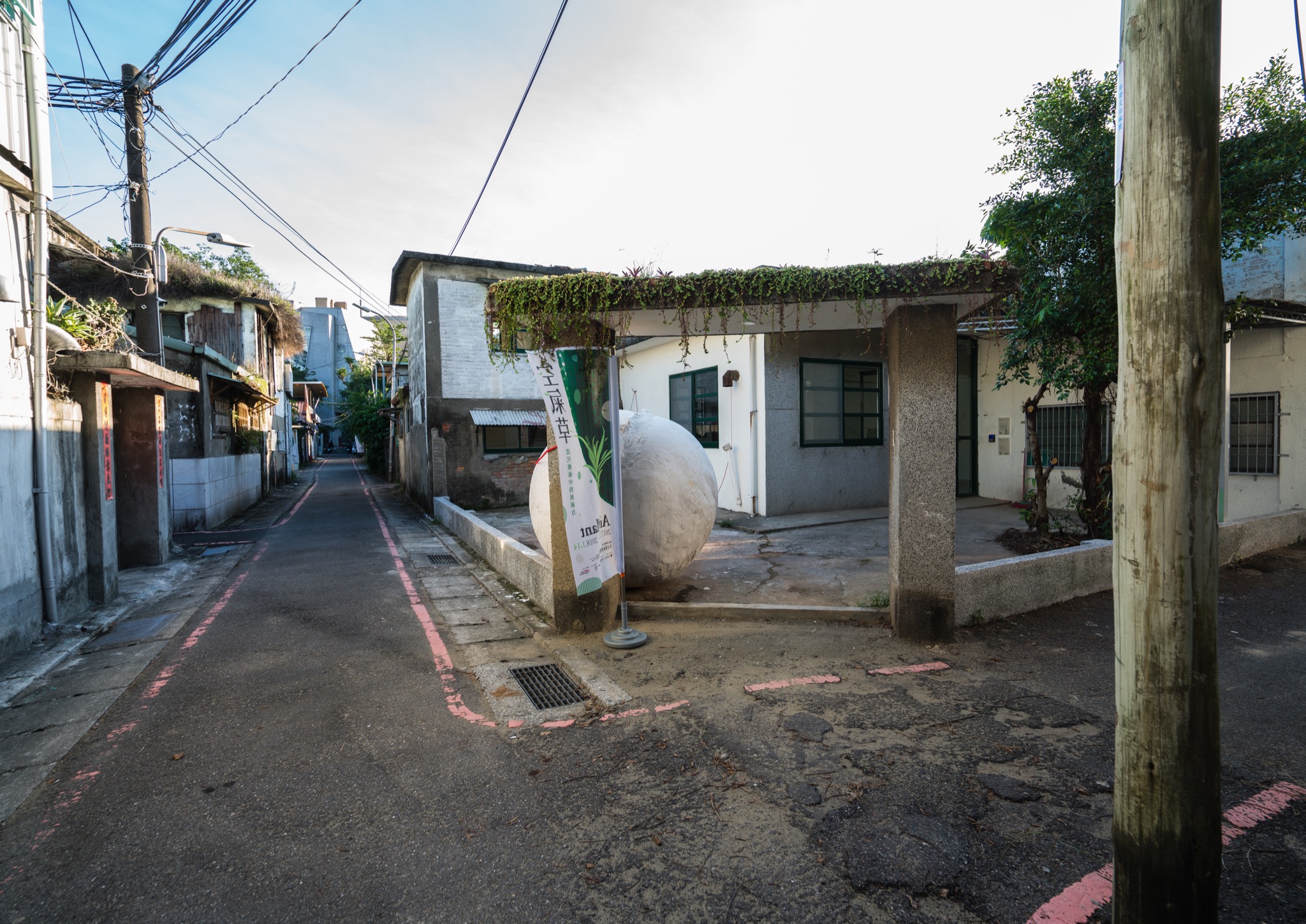
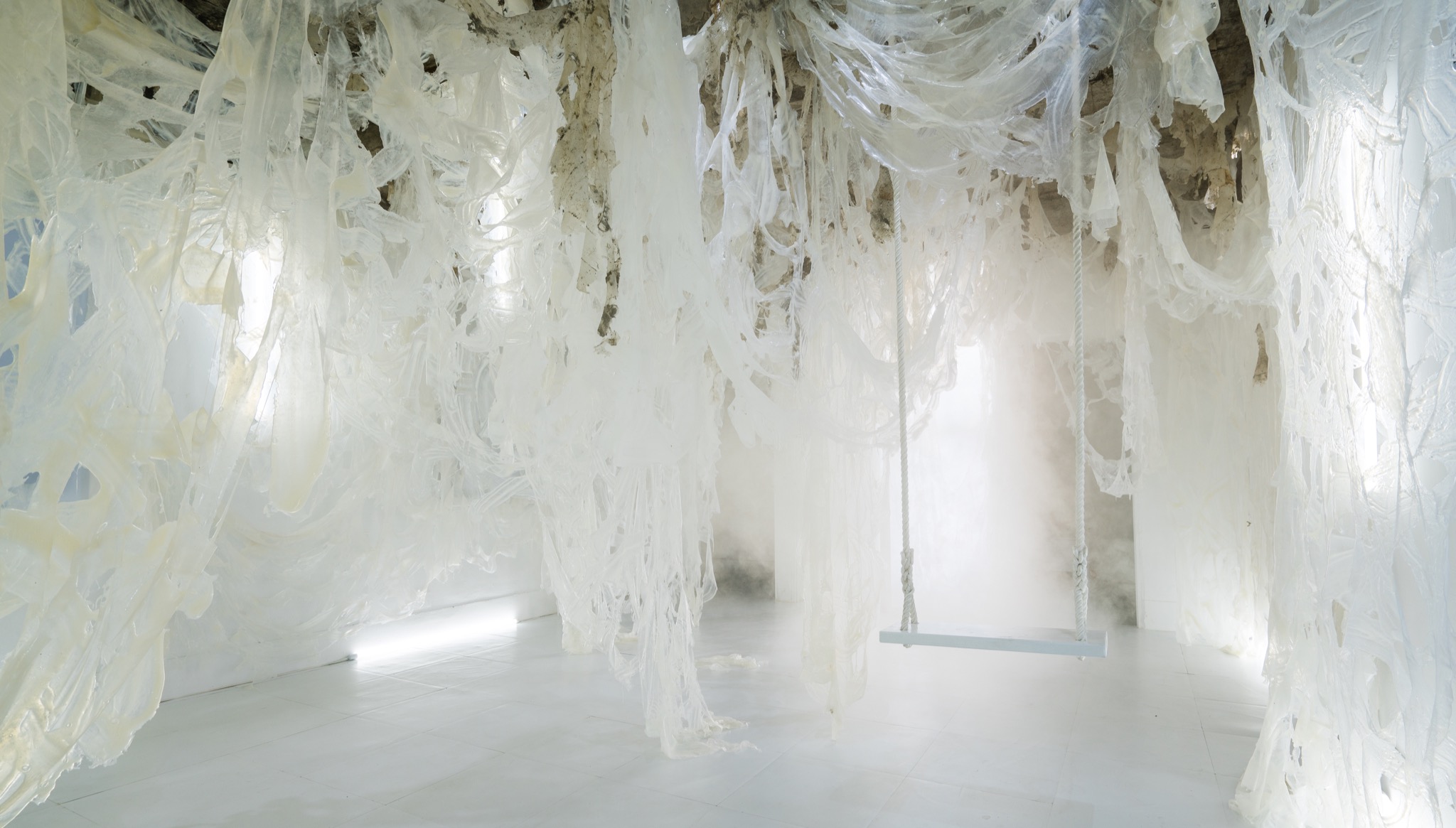
For the Air Plant exhibition, we must specifically point out the characteristics of two exhibition sites, the Yo-Chang Art Museum and The Northern Campus, and the different participation level they indirectly provide to the audience. The exhibition space of the former cannot escape its museum framework. Within the museum, the distinction and separation between the audience and artworks are obvious, and the hidden contrast is difficult to eliminate. (Picture 4)
In The Northern Campus, the atmosphere is different. The area was originally the dependent commune for the National Overseas Chinese Senior High School. Although the interior of these old houses have been remodeled since their construction in 1955, their exterior still resemble stand-alone houses with a yard. The highest building does not exceed two floors. Even though the property rights of this place have been transferred, it is still currently an art village and a residential area. This gives the exhibition area a subtle spatial divide. To the residents, artists represent a type of interference when they are planning and setting up an exhibition. When the exhibition starts, the audience often becomes “outsiders” who sometime intrude upon the residents’ living areas and interfere with their daily lives. The difference in identity makes the audience feel that it is “on the same side” as the exhibition, which evokes a sense of psychological closeness. This is because the audience uses the exhibition as a reason to legitimately enter the exhibition areas and share the areas with the artworks. With every alley in the village looking similar, the Air Plant flags serve as indicators to the audience.
The “home before exhibition site” spatial atmosphere enables the audience to enter The Northern Campus with a relaxed attitude. It is because of this site’s special characteristic that Yen-Hong Liu’s Ceylon Houndstongue and the Realms of Land, Water, Fire, Wind, and Space (where he converted the site into a residence) does not appear hypocritical. (Picture 5) The site’s characteristics also make the hand-sewing artworks of the Fong-Fong House (created by the Fong-Fong’s Group featuring artists Xuan Huang, Jie-Ching Shih, Min Yao, and Chen-Yu Yu) more specific as the artworks pass through and surround the different space and gaps in the old house. Kuei-Chih Lee’s soil and tree branches in Recycling Scenery and Yueh-Nu Kuo’s half-concealed white plastic artwork Layered Space create a scene suitable for abandoned houses. (Picture 6) These artworks are well-liked by the audience because of their direct sensory impact. Different from the aforementioned works, where the audience is “taken into” a space, Yannick Dauby’s Trajectories & Impacts was set up in a junction between public space and private domain (a half torn down house). Sound is used to take the audience “out of the space” so that it can listen to a different context while being situated in another context, and encounter its emotional point among the undulation of sound. This work has been called the artwork with the strongest staying power in The Northern Campus.
4.
“The more I look at it, the more my novel resembles a screenplay featuring dialogues and directions. This was okay up to a point, but my wish now is to write fiction that can only work properly in a paper-based setting. Why write novels if they are going to offer more or less the same experience if someone can gain it by turning on a television? How can written fiction survive against the might of cinemas and televisions if it doesn’t offer something unique, something the other forms can’t offer?”
This was a quote from Kazuo Ishiguro’s 2017 Nobel Prize speech. Same thinking can be applied to art. We can relate written novels with exhibition site artworks. A multitude of commonplace media such as films, recordings, and books allow people to appreciate art remotely. If exhibitions cannot become the drive that summons people away from ordinary life and enter the art world, then why do people need to go to exhibition venues?
Chun-Yi Chang uses the longevity of air plants as a metaphor for a “free and active art creation that has a tenacious vitality.” Chang not only proposed an extremely suitable image link, but also skillfully connected the concept of “radicant” introduced by Nicolas Bourriaud (which emphasizes continuous changes), that of “rhizome” presented by Gilles Deleuze’s (which highlights diversity and expansions), that of “gap” (l’écart) proposed by François Jullien (which underlines cultural fertility), and that of air plants being able to survive without roots. If we temporarily throw these fabled meanings aside and think of air plants in daily settings, we can decipher the current meaning of art in the general public’s mind: something that the general public needs not pay special attention to in its daily life, something with value that is of no particular importance, something that adds color to life, and something that occasionally offers an emotional escape. Regardless of whether the Air Plant exhibition entails grand discussion or small inspiration, it has successfully created a refreshing channel of communication.
Descriptions of the pictures:
Picture 1. Yung-Ta Chang (2017). Relative Perception N°4-C
Picture 2. Joyce Ho (2017). These Things That Drift Away.
Picture 3. Joyce Ho + Snow Huang (2017). 254 Yen.
Picture 4. Exterior view of The Northern Campus.
Picture 5. Yen-Hong Liu (2017). Ceylon Houndstongue and the Realms of Land, Water, Fire, Wind, and Space.
Picture 6. Yueh-Nu Kuo (2015-2017). Layered Space.
1 Jérôme Glicenstein, L’art : une histoire d’expositions, éd. PUF, 2009, p. 10.